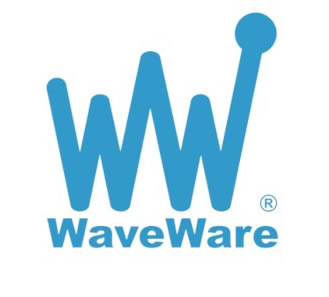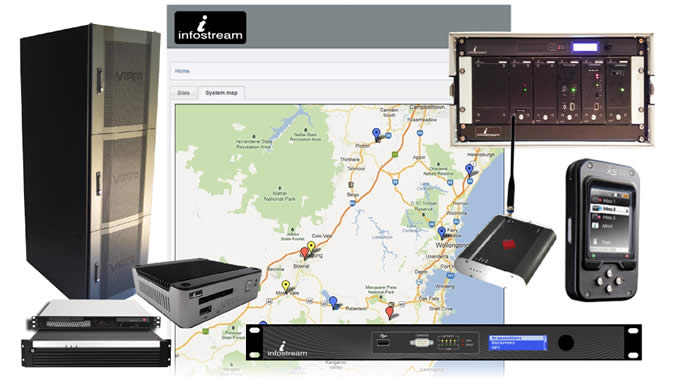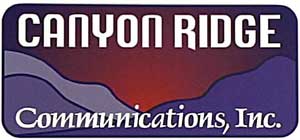Selected portions of the BloostonLaw Telecom Update, and/or the BloostonLaw Private Users Update — newsletters from the Law Offices of Blooston, Mordkofsky, Dickens, Duffy & Prendergast, LLP are reproduced in this section with the firm's permission. 
| BloostonLaw Telecom Update | Vol. 17, No. 48 | November 25, 2014 |

Headlines 
FCC Likely to Issue a Further Rural ILEC USF Order During DecemberIt is expected that the FCC will issue an order during December resolving some of the further rulemaking
proposals set forth in the June 10, 2014 Omnibus USF Order. It is likely that the FCC will increase the minimum broadband speed associated with universal service funding from 4 Megabits per second (Mbps) downstream to 10 Mbps downstream, while keeping the minimum upstream speed at 1 Mbps. As explained in the Omnibus USF Order, this change will primarily focus upon new deployments of broadband infrastructure, and is not intended to require carriers to upgrade their existing networks to 10/1 Mbps immediately. The standards for “reasonable requests” for broadband service “within a reasonable period of time” will remain in place. That is, carriers will be able to consider whether the incremental costs of the upgrades necessary to serve a particular location are justified by the expected revenues (both customer revenues and universal service support) from the upgraded line. Whereas the FCC is not expected to take a hard line on 10/1 Mbps service for at least several years, it is likely to scrutinize refusals to provide requested 4/1 Mbps much more strictly during that time. The FCC is also expected to begin enforcing the rules reducing high-cost support to a rural ILEC where an “unsubsidized competitor” overlaps 100 percent of its study area. Initial expectations are that the FCC will look at “100% overlap” situations every two years, and that affected carriers will lose some (but not all) of their support when they are found to be subject to 100% overlap. There is expected to be some type of challenge process where both affected rural ILECs and alleged unsubsidized competitors will have an opportunity to present evidence and argument. It will be important for rural ILECs and their state commissions to make sure that the FCC is using the appropriate and correct boundaries for each rural ILEC study area. The FCC is also likely to adopt its proposed rules regarding: (a) the High Cost Loop Support (HCLS) mechanism cap; (b) certification that a USF support recipient’s broadband rates are reasonably comparable; and (c) reductions in support for late filings. In the first instance, the national average cost per loop (NACPL) is expected to be frozen as of the later of December 31, 2014, or the date the new HCLS rule becomes effective. This change is intended to discourage the alleged “race to the top” and to prevent lower cost rural ILECs from losing HCLS entirely when their average cost per loop has not decreased. Henceforth, when the HCLS cap is lower than the total HCLS that would otherwise be available to all eligible rural ILECs, each company will take a “haircut” with respect to the same percentage of its HCLS disbursements for that year in order to bring aggregate disbursements down to the capped amount. An alternative plan — whereby half of the “haircut” would be taken from total dollar support, and the other half from per-line support — has apparently been rejected. As of the July 1, 2015 filing of the next FCC Form 481 report, high cost support recipients will be required to submit a letter certifying that their broadband rates are “reasonably comparable” to those in urban areas. The proposed rule indicated that such certification would be sufficient if it applied to one plan that meets the reasonable comparability benchmark specified annually by the FCC’s Wireline Competition Bureau in a Public Notice. For at least the initial year or two, the FCC expects to monitor these certifications only and not to take any enforcement actions against eligible telecommunications carriers (ETCs) that cannot make the certification. The FCC is also expected to adopt a new rule penalizing ETCs a minimum of seven days’ lost support for late filings, and thereafter reducing support on a pro-rata daily basis until the filing is made. The rule may also include a one-time three-day grace period for each entity. The FCC appears to have rejected an alternative proposal to turn late USF filings over to the Enforcement Bureau, which imposes forfeitures of $4,000 (increased by aggravating factors and reduced by extenuating circumstances) for late filings. Whereas the new USF late filing penalties are considerably less that the existing penalties, they are more likely to be enforced than the current penalties which are often waived (albeit after delays of many months). The FCC is not likely to act at this time upon a long-term plan for high-cost broadband support for rate-of-return carriers. Neither the FCC’s goals, nor the Rural Association stand-alone broadband plan, nor the ITTA voluntary incentive regulation plan is expected to be addressed in December. It is also unclear whether the FCC will address at this time its proposal that no new investment after a date certain may be recovered through HCLS and Interstate Common Line Support (ICLS) when such investment occurs in an “area” that is already served by a “qualifying competitor.” FCC Announces Adoption of NPRM on Technology Transition, Text ForthcomingThe FCC issued a News Release on November 21 announcing the adoption of an NPRM that seeks comment
on proposals to update a variety of rules in light of the ongoing technology transition. At this time, the text of
the NPRM itself has not yet been released. According to the News Release, the proposals on which comment is sought include: - A framework to establish reasonable expectations for when providers should bear responsibility for providing a backup power solution for the communications equipment at a customer’s home during a power outage.
- Potential strategies for providing back-up power during lengthy commercial power failures
- Increased transparency, consumer protection, and opportunities for consumer input when carriers are planning to shut down (or “retire”) their existing copper networks.
- Processes to ensure that new services meet the needs of consumers before carriers are allowed to remove legacy services from the marketplace.
- A tentative conclusion that carriers seeking to discontinue a service used as a wholesale input should be required to provide competitive carriers equivalent wholesale access going forward.
- Additional proposals to update the FCC’s rules so that competitive carriers receive sufficient notice of when copper networks are being shut off, so that they can continue to serve their customers effectively.
The FCC also asks for facts and data about whether carriers are “retiring” copper networks without giving notice simply by failing to maintain them, and about allegations that carriers are not being clear with consumers about the options available when the copper network is shut down. The FCC also adopted a Declaratory Ruling clarifying that the circumstances in which a carrier must seek approval to discontinue a service depend upon the practical impact of its actions, not the fine print of an aging tariff filing. This ensures that there will be a public process to evaluate a proposed discontinuance before a choice is removed from the market, regardless of how the carrier has written its tariff. FCC Adopts 911 Policy Statement, Proposes New 911 RulesOn November 21, the FCC adopted a Policy Statement and NPRM in which it (i) affirmed core principles that guide its approach to ensuring reliable and resilient 911 service and reaffirmed its continuing partnership with state and local authorities; (ii) proposed specific rules designed to address recent multi-state 911 outages; and (iii) proposed additional mechanisms designed to ensure that the 911 governance structure keeps pace with evolving technologies and new reliability challenges. In the Policy Statement, the FCC reinforced its commitment to working with state and local authorities in updating 911. The FCC also identified two guiding principles that it says should apply to “every entity with a role in 911 call completion … First, any new elements of 911 architecture or service should have the necessary redundancy and reliability safeguards, along with the appropriate governance mechanisms, to maximize reliability and protect public safety. Second, significant changes in 911 service should be coordinated in a transparent manner with the Commission and with state and local authorities.” In the NPRM section, the FCC made a number of proposals, including: - Expanding the scope of entities covered by Rule 12.4 (i.e., the definition of “covered 911 service provider”) to include all entities that provide 911, E911, or NG911 capabilities, such as call routing, automatic location information (ALI), automatic number identification (ANI), location information servers (LIS), text-to-911, or the functional equivalent of those capabilities, regardless of whether they provide such capabilities under a direct contractual relationship with a PSAP or emergency authority.
- Requiring notification to the Commission and the public of major changes in any covered 911 service provider’s network architecture or scope of 911 services that are not otherwise covered by existing network change notification requirements.
- Requiring covered 911 service providers that seek to discontinue, reduce, or impair existing 911 service in a way that does not trigger already existing authorization requirements should be required to obtain Commission approval.
- Requiring covered 911 service providers that seek to offer new services that affect 911 call completion to certify to the Commission that they have the technical and operational capability to provide reliable 911 service.
- Assigning the role of 911 network operations center provider for each jurisdiction to the entity responsible for transport of 911 traffic to the PSAP or PSAPs serving that jurisdiction.
Comments will be due 45 days after publication of the NPRM in the Federal Register, and replies will be due another 30 days after that. FCC Seeks Comment on Revision to Broadcast Contest RuleOn November 21, the FCC issued a Notice of Proposed Rulemaking in which it proposes to amend Section 73.1216 of the rules governing broadcast licensee-conducted contests (“Contest Rule”) by, among other things, allowing licensees to comply with their obligation to disclose material contest terms either by broadcasting the material terms or making such terms available in writing on a publicly accessible Internet website. The Contest Rule requires a licensee to broadcast the material terms of a contest the first time it informs its audience how to enter or participate, and to repeat such terms a reasonable number of times thereafter. Although, under the rule, licensees are permitted to employ non-broadcast methods for disclosing material contest terms, they may not substitute such methods for the required broadcast disclosure. In January 2012, Entercom Communications filed the petition requesting that the Commission amend the rule to permit broadcasters to satisfy their obligation to disclose material contest terms providing material terms in written form on a website and upon request by email, in lieu of the currently required broadcasts. Comments will be due 30 days after the NPRM is published in the Federal Register, and reply comments will be due another 30 days after that. Deadline Set for Broadband Speed, Latency Testing Methodology CommentsOn November 20, the FCC’s Public Notice seeking comment on the methodology to be used to measure compliance by high-cost support recipients with their broadband speed and latency performance obligations regarding service to fixed locations was published in the Federal Register. Comments are due December 22. Regarding broadband speed measurement, the FCC proposed a format similar to the testing process it adopted for latency testing by price cap carriers in 2013. Specifically, broadband speed measurements must be made once per hour during the peak 7:00 PM to 11:00 PM period for four consecutive weeks at a minimum of 50 randomly-selected customer locations within the recipient’s supported service area in a state. At least 95 percent of the observations are required to be at or above the required minimum speed. The FCC also asks whether broadband speed testing should be performed by internal network management system tools, and/or by external measurement tools (such as Speedtest/Ookla or Network Diagnostic Tests by M-Labs). It also lists the Measuring Broadband America (MBA) program as an option. Regarding latency measurement, the FCC asserts that the latency testing options adopted for price cap carriers “should provide at least one readily achievable method suitable for small, rural carriers.” Clients will recall that the FCC proposed to extend its latency requirement to RoR carriers and to winners of reverse auctions in price cap areas in its June Omnibus USF Order. In the October 16 Public Notice, the FCC notes that rural carriers have expressed concern that they have no control over latency measurements that include middle mile facilities operated by unrelated carriers, but states that it has rejected similar arguments by price cap carriers because: (a) testing only part of a network will not measure the quality of service received by end users; and (b) price cap carriers have a number of options to influence the quality of service they receive from transit and peering providers. The FCC asked whether the same reasoning is applicable to RoR carriers. RoR clients should let us know of instances where RBOCs and other large carriers have been somewhat less than cooperative in responding to requests for improved middle mile and similar facilities. Finally, the FCC indicated that broadband speed and/or latency audits could be triggered by failures to file the required annual certifications and/or by failures of the test measurements to meet the minimum standards. It also asked whether complaints by customers and/or public watchdog organizations should trigger audits. FCC Announces Tentative Agenda for December Open MeetingAccording to a Public Notice issued on November 20, the following items will tentatively be on the agenda for
the FCC’s December open meeting (scheduled for Thursday, December 11 at 10:30 a.m.): - A Second Report and Order on Reconsideration to close the school and library connectivity gap by adjusting program rules and support levels in order to meet long-term program goals for high-speed connectivity to and within all eligible schools and libraries.
- A Report and Order finalizing decisions necessary to proceed to Phase II of the Connect America Fund.
- A Public Notice that asks for comment on the detailed procedures necessary to carry out the Broadcast Incentive Auction. The Public Notice includes specific proposals on auction design issues such as determination of the initial clearing target, opening bid prices, and the final television channel
assignment process.
As always, the meeting will be webcast live at www.fcc.gov/live. Comment Deadlines Set on Rules for Unlicensed Use of TV Band and 600 MHz Band SpectrumThe FCC’s rulemaking proposal for unlicensed operations in spectrum to be made available by the broadcast “repacking” process has now been published in the Federal Register. In this document, the Commission proposes and seeks comments on rules for unlicensed operations in the frequency bands that are now and will continue to be allocated and assigned to broadcast television services after the incentive auction, including fixed and personal/portable white space devices and unlicensed wireless microphones. The Commission also proposes and seeks comment on rules for the operation of unlicensed white space devices, and licensed and unlicensed wireless microphones in the 600 MHz Band, guard bands and duplex gap that will exist after the incentive auction. Comments are due on or before January 5, 2015; reply comments are due on or before January 26, 2015. Affected equipment manufacturers and other interested clients will want to determine whether there are any
negatives to be addressed, and/or any changes that can be proposed to better use of the spectrum. FCC Releases Updated Special Access Data Collection FAQsOn November 21, the FCC released another update to the Special Access Data Collection FAQ, available at
http://www.fcc.gov/document/special-access-data-collection-faqs. The FAQs provide answers to non-technical
frequently asked questions regarding the FCC’s Special Access Data Collection. As a reminder, All entities that were required to file FCC Form 477 to report the provision of "broadband connections to end user locations" for Year 2013 are required to respond to the FCC's special access data collection, due December 15, 2014. The sections of the data collection that an entity must complete are determined by whether the entity meets the definition of Provider and/or Purchaser of special access services or provides Best Efforts Business Broadband Internet Access Services as defined in the data collection. Even if an entity does not meet either definition, it must still complete a certification to that effect. Calendar At-a-Glance 
December
Dec. 1 – Deadline to Increase Residential Rate Floor to $16.
Dec. 5 – Comments are due on US Telecom Petition for Forbearance from Certain Wireline ILEC Regs.
Dec. 5 – Comments are due on Unauthorized EAS Alert Public Notice.
Dec. 8 – Comments are due on TracFone Petition for Declaratory Ruling on 911 Taxes.
Dec. 11 – Open Meeting.
Dec. 11 – 2014 FCC Form 477 due (Local Competition and Broadband Reporting).
Dec. 15 – Deadline for Special Access Data Collection.
Dec. 15 – Reply comments are due on Part 32 Accounting Rules NPRM.
Dec. 17 – Comments are due on Part 22 Technical Changes.
Dec. 19 – Reply comments are due on Unauthorized EAS Alert Public Notice.
Dec. 22 – Comments due on Broadband Speed, Latency Testing Methodology.
Dec. 22 – Reply comments are due on US Telecom Petition for Forbearance from Certain Wireline ILEC Regs.
Dec. 23 – Reply comments are due on TracFone Petition for Declaratory Ruling on 911 Taxes. January
Jan. 5 – Comments are due on Unlicensed Use of TV Band and 600 MHz Band Spectrum.
Jan. 15 – Annual Hearing Aid Compatibility Report is due.
Jan. 19 – Reply comments on Part 22 Technical Changes are due.
Jan. 26 – Reply comments are due on Unlicensed Use of TV Band and 600 MHz Band Spectrum.
Jan. 31 – FCC Form 555 (Annual Lifeline ETC Certification Form) is due. 
| BloostonLaw Telecom Update | Vol. 17, No. 49 | December 3, 2014 |

FCC Extends Special Access Data Collection Filing DeadlineOn November 26, the FCC issued an Order extending the deadline for responding to special access data collection for some entities. Specifically, for large businesses with more than 1,500 employees that are required to provide data, the deadline has been extended to January 29, 2015. For small businesses with 1,500 or fewer employees that are required to provide data, the deadline has been extended to February 27, 2015. For those required only to certify that they are not required to provide data and information because they are not a covered Provider, Purchaser, or entities providing Best Efforts Business Broadband Internet Access Service, the deadline remains December 15, 2014. Headlines 
FCC Releases Technology Transitions NPRM and Declaratory RulingThis week the FCC released the NPRM and Declaratory Ruling that it had adopted at its November 21 Open Meeting, in which it seeks comment on proposals to update rules on customer premises equipment (CPE) backup power, copper retirement, and Section 214 discontinuance. At this time, comment and reply comment dates have not yet been established. With regard to CPE backup, the FCC seeks comment on how to ensure CPE has sufficient functionality in the event of a power outage. Unlike copper networks, which provide sufficient power to operate CPE indefinitely, CPE for VoIP and other IP-based services typically require a backup power source. To this end, the FCC seeks comment on which communications services should fall within the scope of any CPE backup rules, what services should be considered “minimally essential” for purposes of continuity of power, and what steps providers should be required to take to maintain continuity of power for CPE. With regard to copper retirement, the FCC proposes defining “retirement” of copper to include removing and disabling of copper loops, sub-loops, and the feeder portion of loops. The FCC also seeks comment on how to address allegations that in some cases incumbent LECs are not adequately maintaining their copper facilities that are not yet retired. The FCC indicated that although it does not intend to establish an approval requirement for copper retirement, it does seek comment on improvements to the existing process “to better promote competition and protect consumers.” Comment is also sought on whether and how the FCC should take action to promote the sale or auction of copper prior to retirement, and on the adoption of best practices that can help address the need for reliable backup power. Rural ILECs and CLECs should consider whether this presents a business opportunity for them, especially if there are customers that may still want the reliability of copper, and/or if copper’s broadband potential can be expanded. With regard to Section 214 discontinuances, the FCC seeks comment on what would constitute an adequate substitute for a retail service discontinuation, and on better defining the scope of its section 214(a) authority (particularly in the context of wholesale services). Carriers interested in filing comments in this proceeding should contact the firm for more information. Wireline Bureau Files Analysis of Proposals to Alter HCLS CalculationsOn November 24, the FCC’s Wireline Competition Bureau submitted into the record a staff analysis of historical costs experienced by rate-of-return carriers eligible for High Cost Loop Support (HCLS). According to the Bureau’s summarization, the analysis shows: - Study areas with study area costs per loop (SACPL) in excess of 150 percent of the national average cost per loop (NACPL) in 2013 (which are reimbursed for 75 percent of their unseparated loop costs in excess of that benchmark) experienced a 36 percent increase in costs over that period.
- Study areas with costs per loop between 115 and 150 percent of the NACPL (which are reimbursed for 65 percent of unseparated loop costs above 115 percent) had only a four percent increase in costs.
- Study areas with loop costs below 115 percent of the NACPL (no HCLS) saw a 14 percent decrease in costs.
- The amount of study areas that received no support because their SACPLs were below the 115 percent benchmark increased by18 percent from 2004 to 2013.
The historical analysis and a detailed description of the Bureau’s methodology can be found at http://www.fcc.gov/wcb/HistoricalAnalysis.zip. The Bureau also conducted an analysis of the Commission’s recent proposal to modify the manner in which HCLS is calculated as compared with the effects of NTCA’s proposed modification to that proposal: | 2015 Forecast | No Rule Change | Commission’s Proposal | NTCA’s Proposal | Number of Study Areas
Receiving Report | 744 | 781 | 770 | Projected Number of
Study Areas that No
Longer Will Received
HCLS | 37 | 0 | 11 | Max Support Lost
(compared to No Rule
Change) | n/a | 7% | 3% |
According to the Bureau, under NTCA’s proposed modification, 11 study areas would lose all HCLS support: Oxford County Telephone (ME), North Penn Telephone Co. (PA), Citizens Telephone Co. (GA), Progressive Rural Telephone Co-op (GA), Citizens Telephone Co. (NC), Service Telephone Co. (NC), West Tennessee Telephone (TN), Carr Telephone Co. (MI), Winn Telephone Co. (MI), Cascade Communications (IA), and Benton Cooperative Telephone Co. (MN). The Bureau’s full analysis can be found at http://www.fcc.gov/wcb/HCLSProposalsPublic.xlsx. Comment Sought on Robocalls and Call-Blocking Issues Raised by Attorneys GeneralOn November 24, the FCC issued a Public Notice seeking comment on a request for an official FCC opinion on three issues regarding telephone providers’ legal ability to implement call-blocking technology as a means of addressing unwanted telemarketing calls. Comments are due December 24, 2014 and reply comments are due January 8, 2015. The request comes from the National Association of Attorneys General, a group of 39 Attorneys General from around the United States. Specifically, the Attorneys General request a formal Commission opinion on three categories of questions: - What legal and/or regulatory prohibitions, if any, prevent telephone carriers from implementing call-blocking technology? Does the answer change if the telephone companies’ customers affirmatively “opt into” the call-blocking technology (either for a fee or as a free service)?
- US Telecom claims that telephone carriers “can and do block harassing and annoying telephone traffic at their end-user customer’s request,” but only for a “discrete set of specific phone numbers.” At a customer’s request, can telephone carriers legally block certain types of calls (e.g., telemarketing calls) if technology is able to identify incoming calls as originating or probably originating from a telemarketer?
- US Telecom describes the FCC’s position as “strict oversight in ensuring the unimpeded delivery of telecommunications traffic.” Is US Telecom’s characterization of the FCC’s position accurate? If so, upon what basis does the FCC claim that telephone carriers may not “block, choke, reduce or restrict telecommunications traffic in any way”?
Although the FCC does not allow carriers to engage in call blocking, the Public Notice suggests it’s willing to consider the possibility. In that regard, the FCC also seeks comment on what call-blocking technologies are available or under development in the United States and internationally, how they work, how those details should inform the Commission’s analysis, and whether differences in how specific technologies work produce different outcomes under the law. Law & Regulation 
FCC Adopts Electronic Filing for Certain ProceedingsOn November 26, the FCC adopted revisions to its rules aimed at improving efficiency by requiring electronic filing for three common types of proceedings: (a) applications for authorization of domestic transfers of control under Section 214(a); (b) applications for authorization to discontinue, reduce, or impair a service under Section 214(a); and (c) notices of network changes under Section 251(c)(5). At present, domestic common carriers cannot electronically file these types of applications and notices with the FCC. Instead, they must be made on paper with the Secretary’s Office, and, where applicable, copies must also be sent with the accompanying application processing fees to the FCC’s lockbox bank in St. Louis, Missouri. As a result, the process is time-consuming and difficult to track. Therefore, the FCC has implemented new module within its Electronic Comment Filing System (ECFS) to accommodate these types of proceedings. FCC Opens New Docket for Annual Lifeline ETC CertificationsOn December 2, the FCC’s Wireline Competition Bureau issued a Public Notice announcing the opening of a new docket for Eligible Telecommunications Carriers (ETCs) to file their annual certifications demonstrating compliance with the Lifeline program rules. This new docket, 14-171, will be used for the annual ETC filing, due on January 31, 2015, and for all filings in subsequent years. Newport Television to Pay $35,000 Fine for Broadcasting Private Telephone ConversationOn November 28, the FCC’s Enforcement Bureau announced the settlement of an investigation of Newport Television LLC, former licensee of television station KTVX(DT) in Salt Lake City, Utah, involving the station’s recording and broadcast of a consumer’s telephone conversation as part of a news segment without first telling the person that the call was being recorded and would be broadcast. According to the Public Notice, in August 2012, KTVX(DT) twice broadcast in a news report a recorded telephone conversation with a consumer without prior notification to or the consent of that consumer. Broadcasts of telephone conversations without such notice are prohibited by the FCC’s Telephone Broadcast Rule, as they “threaten the privacy and reputation of consumers whose telephone conversations are broadcast to the public without their knowledge or consent.” In addition, Newport violated the FCC’s requirement to respond fully and promptly to requests for information from the Enforcement Bureau. Under the terms of the settlement, Newport admitted that it violated the Telephone Broadcast Rule and that it failed to timely respond to Enforcement Bureau investigative requests, and will pay a $35,000 civil penalty for these violations. Industry 
Commissioner Pai Asks Netflix to Explain Recent PracticesOn December 2, FCC Commissioner Ajit Pai wrote a letter to Netflix CEO Reed Hastings asking why Netflix advocates a free and open internet while at the same time working to secure so-called “fast lane” deals with ISPs. “Netflix has been one of the principal advocates for subjecting Internet service providers (ISPs) to public utility regulation under Title II of the Communications Act, arguing that this step is necessary to prevent the development of so-called "fast lanes" on the Internet." Pai wrote. For this reason, the Commissioner continued, he “was surprised to learn of allegations that Netflix has been working to effectively secure "fast lanes" for its own content on ISPs' networks at the expense of its competitors.” Pai also noted his understanding that, “Netflix has at times changed its streaming protocols where open caching is used, which impedes open caching software from correctly identifying and caching Netflix traffic. Because Netflix traffic constitutes such a substantial percentage of streaming video traffic, measures like this threaten the viability of open standards. In other words, if standards collectively agreed upon by much of the industry cannot identify and correctly route Netflix traffic, those standards ultimately are unlikely to be of much benefit to digital video consumers.” Pai closed his letter by inviting a response from Mr. Hastings by December 16. FCC Grants Relinquishments of ETC DesignationsOn November 25, the FCC’s Wireline Competition Bureau issued a spate of Orders approving various requests to relinquish ETC designations. Among the relinquishing entities were AT&T’s affiliates Cingular Wireless and Cricket Communications, who relinquished ETC designations in Virginia; Cricket, who relinquished ETC designations in Tennessee, North Carolina, New York, and the District of Columbia; and T-Mobile, who relinquished ETC designations in Alabama, Connecticut, Delaware, New Hampshire, New York, North Carolina, Tennessee, and the District of Columbia. New York City Announces Public Wi-Fi Plan Supported by AdvertisementsBusinessInsider and other news outlets are reporting on a new plan to bring free, fast public Wi-Fi to all five boroughs of New York. Called LinkNYC, the plan will replace the city’s pay phone system with so-called “Links,” hubs for free Wi-Fi that run at speeds of up to one gigabit and host a variety of services such as phone calls within the U.S., 311, 911, device charging, and tablets with access to directions and city services. The plan reportedly will not cost taxpayers anything — rather, revenue will come from digital advertisements built into the hubs that are expected to generate more than $500 million in revenue for the city over twelve years. On November 17, Mayor Bill de Blasio, Chief Technology Officer Minerva Tantoco and Department of Information Technology and Telecommunications Commissioner Anne Roest today announced the selection of CityBridge to develop and operate the LinkNYC network. More information can be found at the LinkNYC website, http://www.link.nyc/. Deadlines
FEBRUARY 2: FCC FORM 502, NUMBER UTILIZATION AND FORECAST REPORT. Any wireless or wireline carrier (including paging companies) that have received number blocks—including 100, 1,000, or 10,000 number blocks—from the North American Numbering Plan Administrator (NANPA), a Pooling Administrator, or from another carrier, must file Form 502 by February 2 (as February 1 falls on a Sunday this year). Carriers porting numbers for the purpose of transferring an established customer’s service to another service provider must also report, but the carrier receiving numbers through porting does not. Resold services should also be treated like ported numbers, meaning the carrier transferring the resold service to another carrier is required to report those numbers but the carrier receiving such numbers should not report them. Reporting carriers are required to include their FCC Registration Number (FRN). Reporting carriers file utilization and forecast reports semiannually on or before February 1 for the preceding six-month reporting period ending December 31, and on or before August 1 for the preceding six-month reporting period ending June 30. [emphasis added] Calendar At-a-Glance 
December
Dec. 5 – Comments are due on US Telecom Petition for Forbearance from Certain Wireline ILEC Regs.
Dec. 5 – Comments are due on Unauthorized EAS Alert Public Notice.
Dec. 8 – Comments are due on TracFone Petition for Declaratory Ruling on 911 Taxes.
Dec. 11 – Open Meeting.
Dec. 11 – 2014 FCC Form 477 due (Local Competition and Broadband Reporting).
Dec. 15 – Deadline for Special Access Data Collection Certifications for Entities Not Required to Provide Data
Dec. 15 – Reply comments are due on Part 32 Accounting Rules NPRM.
Dec. 17 – Comments are due on Part 22 Technical Changes.
Dec. 19 – Reply comments are due on Unauthorized EAS Alert Public Notice.
Dec. 22 – Comments due on Broadband Speed, Latency Testing Methodology.
Dec. 22 – Reply comments are due on US Telecom Petition for Forbearance from Certain Wireline ILEC Regs.
Dec. 23 – Reply comments are due on TracFone Petition for Declaratory Ruling on 911 Taxes.
Dec. 24 – Comments are due on Robocall and Call-Blocking Issues. January
Jan. 5 – Comments are due on Unlicensed Use of TV Band and 600 MHz Band Spectrum.
Jan. 8 – Reply comments are due on Robocall and Call-Blocking Issues.
Jan. 15 – Annual Hearing Aid Compatibility Report is due.
Jan. 19 – Reply comments on Part 22 Technical Changes are due.
Jan. 26 – Reply comments are due on Unlicensed Use of TV Band and 600 MHz Band Spectrum.
Jan. 29 – Deadline for Special Access Data Collection for large businesses with more than 1,500 employees.
Jan. 31 – FCC Form 555 (Annual Lifeline ETC Certification Form) is due. February
Feb. 2 – FCC Form 499-Q (Quarterly Telecommunications Reporting Worksheet) is due.
Feb. 2 – FCC Form 502 (Number Utilization and Forecast Report) is due.
Feb. 27 – Deadline for Special Access Data Collection for small businesses with less than 1,500 employees. 
| BloostonLaw Private Users Update | Vol. 15, No. 11 | November 2014 |

Old Sex Offender Conviction Leads to Revocation of Amateur Radio LicenseThe Federal Communications Commission has revoked the Amateur Radio (HAM Radio) license held by David Titus — finding that Mr. Titus was no longer qualified to remain a Commission licensee due to prior sex offenses. This case goes back to 2007 when the FCC’s Enforcement Bureau investigated information that Mr. Titus had been convicted of a felony sex offense involving a child in 1993. Following a hearing on the matter, the Administrative Law Judge determined that while Mr. Titus had committed at least four sexual offenses against children when he was either a juvenile or an 18 year old young adult and that the 1993 the felony was “shockingly evil,” Mr. Titus was qualified to be a Commission licensee since there had been no subsequent misconduct and that he had rehabilitated himself. This conclusion was reached even though the State of Washington and the Seattle Police Department revised Mr. Titus’ sex-offender classification from moderate risk to high risk based upon two incidents that had occurred in 2002 and 2004. Upon review of the Administrative Law Judge’s findings, the Commission concluded that Mr. Titus lacked the necessary character qualifications to hold an FCC radio license. In particular, the Commission concluded that the Administrative Law Judge should have considered the 2002 and 2004 incidents and deferred to the judgment of the State of Washington and the Seattle Police Department in their determination that Mr. Titus now posed a high risk to the community. Further, the Commission stated that HAM radios in the hands of known sex offenders pose a risk to the community at large and justify the revocation of the license. It is important to note that FCC radio license applications include questions regarding felony convictions. Those clients with felony convictions in the chain of ownership should contact our office so that we can ensure that appropriate disclosures are made to the FCC with each of your licensing applications. While the application will undergo greater scrutiny, our experience is that the FCC has found most of the felony convictions that have been reported are not a bar to the issuance of the license. Public Safety and Homeland Security Bureau Seeks Comment on the Location Accuracy Roadmap Submitted by APCO, NENA and Nationwide Wireless CarriersThe Public Safety and Homeland Security Bureau is seeking comment on the “Roadmap for Improving E911 Location Accuracy” (the “Roadmap”) filed by the Association of Public-Safety Communications Officials (“APCO”), the National Emergency Number Association (“NENA”) and the four national wireless carriers – AT&T Mobility, Sprint, T-Mobile USA and Verizon. Comments are due December 10, 2014 and Reply Comments are due December 17, 2014. The Roadmap was filed in response to the Commission’s Third Further Notice of Proposed Rulemaking in which the Commission proposed measures and time-frames to improve location accuracy from wireless devices for 911 calls that originated indoors. The Commission is concerned not only with the horizontal location (e.g., identifying where the caller is on the map or in a building), but also on what floor (i.e., vertical location). In this proceeding, the Commission is encouraging the industry, public safety entities and other stake holders to work together collaboratively in order to develop solutions so that first responders can be directed to the proper dispatched location as rapidly as possible. This is especially critical in multi-story buildings where the caller may not know the floor or have other location information at hand when the 911 call is placed. In connection with the Roadmap that is under consideration, the parties have indicated to the FCC that it will “commit to meaningful improvements and FCC-enforceable timeframes to deliver effective location solutions.” In this regard, the FCC notes that it had already received some communications that oppose the roadmap and support the proposal in the Third Further Notice. While the FCC already has an extensive record, it is seeking comment on whether the Roadmap presents a reasonable alternative to the proposals in the Third Further Notice. As a result, the FCC is looking for comments that address specific aspects of the Roadmap and whether the element should be incorporated, either in whole or in part. Additionally, the FCC is also seeking comment as to whether the Roadmap should be made applicable to other wireless carriers or whether it should be limited to only AT&T Mobility, Sprint, T-Mobile USA and Verizon Wireless. LMCC Comments on ACD Telecom Request to be Certified as a Frequency Advisory CommitteeOn November 20, 2014, the Land Mobile Communications Council (“LMCC”), an organization composed primarily of the various Frequency Advisory Committees (“FACs”), filed comments in connection with the application of ACD Telecom (“ACD”) for certification as an FAC. FACs provide frequency coordination services for the shared Part 90 private radio frequencies. While the LMCC did not take a position on the merits of the ACD application, it did note that an entity must be “representative” of the applicants and licensees that it serves,” which has previously been interpreted to mean that FACs are “to be overseen by and responsible to licensees for whom frequency coordination services are provided.” The LMCC believes that this would require an FAC to have a representative governance structure that ensures the proper implementation of all FAC-related policies and procedures. As a result, the LMCC stated that it believes that employees of the FAC should not be making these decisions or appointing the FAC governing body. This is because the LMCC believes that the “certification of any entity that does not have an independent governance structure would undermine the credibility of the [Part 90] frequency coordination process.” FCC Issues Regulatory Fees Small Entity Compliance GuideOn November 14, 2014, the FCC issued a Small Entity Compliance Guide on the assessment and collection of regulatory fees for Fiscal Year 2014. While the annual regulatory fees were due on September 23, 2014, it is important to remember that this guide will provide information regarding those fees as well as small fees which are payable upfront (as part of application fees) for certain radio services, including many of the Part 90 services as well as the Microwave Services under Part 101 and the Rural Radio/BETRS services under Part 22 of the FCC’s Rules. This guide is similar to the information that we provided to our clients in August/September of this year. Nonetheless, our small business, non-profit and local government clients should review this guide and let us know if you have any questions. Law Enforcement Concerned Over New Device EncryptionAccording to an article in the Yahoo! Tech Section, law enforcement officials are upset about the latest versions of Apple’s iOS and Google’s Android mobile operating systems. Specifically, they are concerned that new levels of encryption introduced by these versions (8 for iOS and “Lollipop” for Android) will hinder investigations because there is no master key that the companies can provide to investigators, even if they have a warrant. The companies simply do not have the keys to provide. According to the Wall Street Journal, one Justice Department official said the companies have promised customers “the equivalent of a house that can't be searched, or a car trunk that could never be opened.” In response to these concerns, Apple has reportedly argued that it’s “no big deal” — the FBI can still access data backed up on its cloud service. But as FBI director James Comey noted in remarks made in October, “uploading to the cloud doesn’t include all of the stored data on a bad guy’s phone, which has the potential to create a black hole for law enforcement. And if the bad guys don’t back up their phones routinely, or if they opt out of uploading to the cloud, the data will only be found on the encrypted devices themselves.” Wireless Bureau Opens Filing Window for Frequency Coordinator for Medical Body Area Networks — Applications Due January 2, 2015The FCC has opened a filing window for organizations to seek to be designated as the frequency coordinator for Medical Body Area Network (“MBAN”) operations in the 2360 – 2390 MHz band through January 2, 2015. The need for frequency coordination in this band is the result of the modification of Part 95 of the FCC’s Rules, authorizing the operation of new MBAN devices in the 2360 – 2400 MHz band. MBAN technology will provide a flexible platform for wireless networking of multiple body transmitters that are used for measuring and recording physiological parameters and other patient information or for performing diagnostic or therapeutic functions in the healthcare setting. It should be noted that MBAN devices will be licensed on a secondary basis and may not cause interference to Aeronautical Mobile Telemetry (AMT) operations. In order to ensure non-interference, healthcare facilities will be required to register MBAN devices with the designated coordinator. It will be the MBAN coordinator’s responsibility to determine whether a proposed MBAN location in the 2360 – 2400 MHz band will be in the line of sight of an AMT receiver, and if so, the MBAN coordinator will be required to work in cooperation with the AMT frequency coordinator and the affected healthcare facility to eliminate any potential interference. As a result, the MBAN coordinator must be familiar with AMT operations and make its services available to all applicants on a non-discriminatory basis. In order to qualify as an MBAN coordinator, the applicant will be required to meet the following criteria: - Have the ability to register and maintain a database of MBAN transmitter locations and operational parameters;
- Have knowledge of or experience with medical wireless systems in healthcare facilities (e.g., the Wireless Medical Telemetry Service);
- Have knowledge of AMT operations;
- Have the ability to calculate and measure interference between MBAN and AMT operations and to enter into mutually satisfactory coordination agreements with the AMT coordinator based on the requirements of the FCC’s Rules;
- Have the ability to develop procedures in order to ensure that registered healthcare facilities operate an MBAN consistent with the requirements of Rule Section 95.1223.
Should a frequency coordination applicant intend to rely on a third party consultant or other outside expertise to demonstrate compliance, it will be necessary to identify the consultant and provide their qualifications as part of the application. In addition to the basic qualifications described above, applicants will also be required to provide the following information in their application: - A description of the entity requesting authorization to be an MBAN frequency coordinator;
- A description of internal controls that will prevent any conflicts of interest;
- The length of time before the applicant could begin its duties as an MBAN frequency coordinator; and
- A statement that the applicant will be able to work with one or more MBAN frequency coordinators should the FCC ultimately decide to designate additional MBAN frequency coordinators.
Clients interested in seeking certification as an MBAN frequency coordinator should contact our office. While the FCC has indicated that there could be multiple MBAN frequency coordinators, it is just as important to note that the FCC could ultimately only designate one entity. Comment Deadlines Set on Rules for Unlicensed Use of TV Band and 600 MHz Band SpectrumThe FCC’s rulemaking proposal for unlicensed operations in spectrum to be made available by the broadcast “repacking” process has now been published in the Federal Register. In this document, the Commission proposes and seeks comments on rules for unlicensed operations in the frequency bands that are now and will continue to be allocated and assigned to broadcast television services after the incentive auction, including fixed and personal/portable white space devices and unlicensed wireless microphones. The Commission also proposes and seeks comment on rules for the operation of unlicensed white space devices, and licensed and unlicensed wireless microphones in the 600 MHz Band, guard bands and duplex gap that will exist after the incentive auction. Comments are due on or before January 5, 2015; reply comments are due on or before January 26, 2015. Affected equipment manufacturers and other interested clients will want to determine whether there are any negatives to be addressed, and/or any changes that can be proposed to better use of the spectrum. | 








































 David George and Bill Noyes
David George and Bill Noyes

































